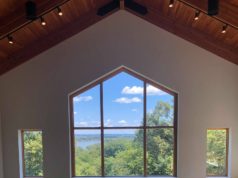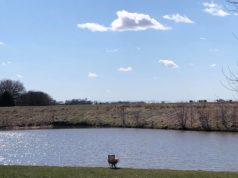One of the definitions of change is to pass from one state to another: to pass or make something pass from one state or stage to another. Moore’s Law is the observation that over the history of hardware, the number of transistors on integrated circuits doubles approximately every two years. The definition of change has been the business model for Mainstay Communications and Moore’s Law is the driving force behind the change. Change from one state to another is a perfect explanation of what the telecommunications industry has been doing and Moore’s Law is why it is changing.
From the beginning, the USDA Rural Utilities Service goal was to have affordable phone service throughout the United States by providing low interest loans to phone companies. Henderson Cooperative Telephone Company believed in that same goal and with a RUS loan in 1972 was able to provide affordable touch tone phone service to the entire exchange. The changes kept coming from analog to digital, computer to internet technology, and with industry changes to regulatory changes from a phone network to a broadband network, Moore’s Law kept chugging along. We changed our name from doing business as Henderson Cooperative Telephone Co. to doing business as Mainstay Communications to better represent our business plan to be more than a phone company.
In January 2001, the Mainstay Board and Manager and Consultant Gerard VanHoet met for their annual board retreat to evaluate industry changes and formulate the five and ten year business plan for the company. The Mainstay Board voted to change from an average schedule company to a cost company. This change would make it possible to receive Federal Universal Service funding to help pay for an investment in the company’s outside plant like Fiber to the Home. At that meeting, it was decided to build out our exchange with Fiber to the Home. This would be done in stages. The first stage was to apply for a 3.6 million dollar RUS loan to put fiber to within 12 thousand feet of each rural subscriber and put Fiber to The Home in Town.  The Mainstay Communications loan was approved. The Rural and Town project were finished in 2008. The second stage was to finish the Rural Fiber to The Home by replacing the last 12 thousand feet of copper with fiber. Mainstay applied for and received approval of a RUS 3.9 million dollar loan in 2008. After loan approval, the FCC sent out a notice of proposed rule-making change for the Federal Universal Service Fund and the project was put on hold until the FCC released the new rules and regulations.
The FCC proposed program would phase out the Federal Universal Service fund and replace the existing rules and regulations with the new Connect America Fund program with new rules and regulations. The FCC came out with a new program, only taking them four years to do it, and the new plan took effect in 2012. The new program called Connect America Fund is to insure telecommunication companies will be making their outside plant capable of providing high speed broadband service. Â Simply stated, the FCC wanted to change the Public Switched Telephone Network to a High Speed Fiber Broadband Network supporting bandwidth networks instead of phone networks. The FCC set new Capital and Corporate benchmark tests to be meet by each telecommunication company to qualify for Connect America Fund support. These FCC benchmark tests are designed to evaluate whether a telecommunications company was investing in regulated outside plant for advanced technologies. Â Not all companies passed the benchmark tests; some failed half or all tests making their Connect America Funding support less, severely limiting their ability to build out a fiber network. Mainstay Communications received the results of the FCC benchmark test for our company and we were well below the capital and corporate limits. These results confirmed that the Mainstay Communications Board made the right business decision twelve years ago to change from an average schedule company to a cost company and invest in Fiber to the Home in Town and Rural.
The next stage was ready to go, and with a RUS loan approved, we started construction in the fall of 2012. Bauer Underground, the construction company out of Norfolk, NE won the bid for our Fiber to The Home project. They were able to plow in a little over fifty percent of the fiber before the frost stopped them. Construction will resume this spring as soon as the roads are fit to plow. Once the construction and cutover to Fiber to the Home Rural is complete, we can focus on Broadband Applications. Broadband Applications include IPTV, Over the Top, Apple TV, Voice over IP, Netflix, Roku, and Hulu just to name a few. The applications are endless. We have the broadband pipe, now let’s use it. Mainstay Communications’ goal will be to utilize our broadband pipe to teach and train our board, staff, and community on the many opportunities of Fiber to the Home.
There are less than a quarter of cities, towns, and villages in the United States that have Fiber to the Home, and Henderson is one of them. With fiber, this community has a good opportunity to attract and keep businesses making Henderson a great place to live and work.
If anyone would like to stop by the office, we would love to visit about how Fiber to The Home is the future, and how it will help build a more productive and competitive community.
Matt Friesen


































